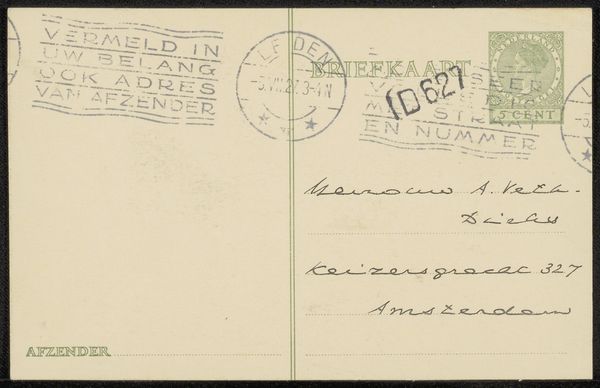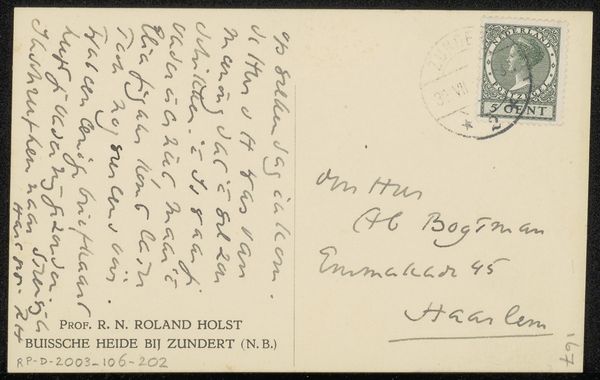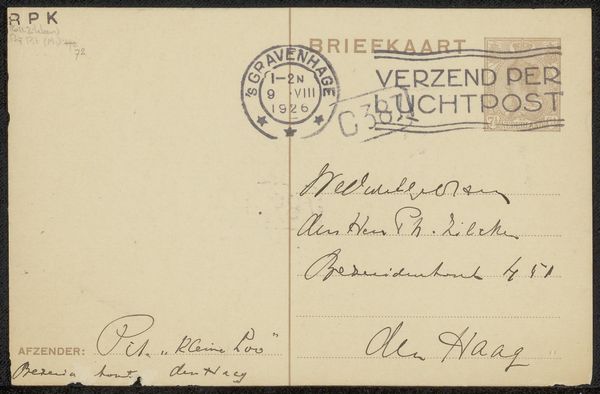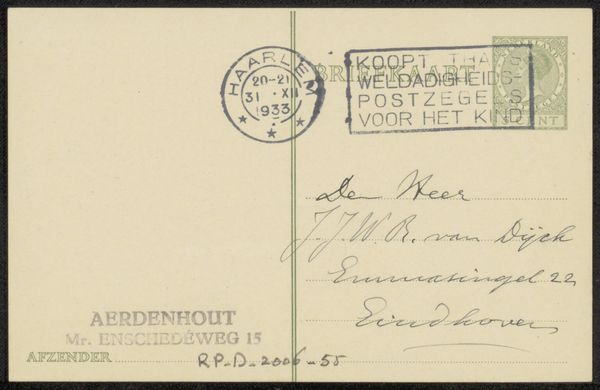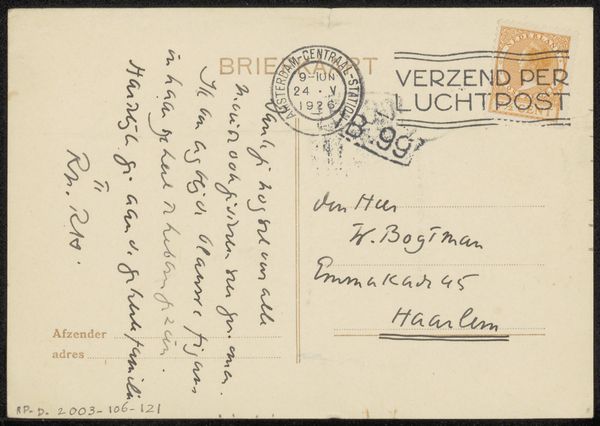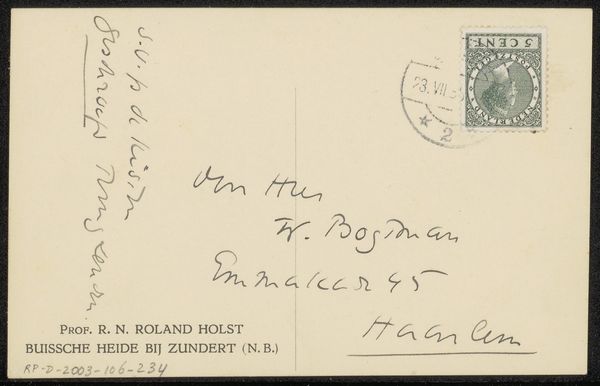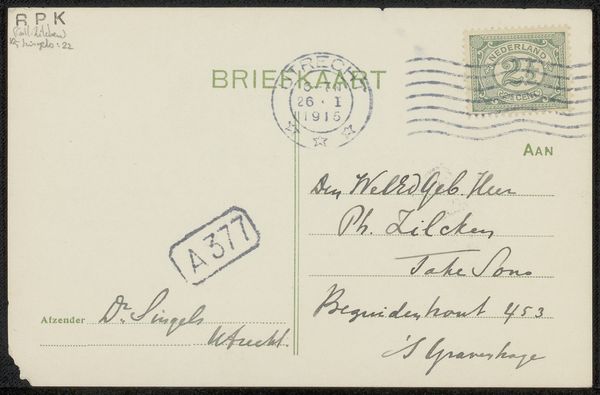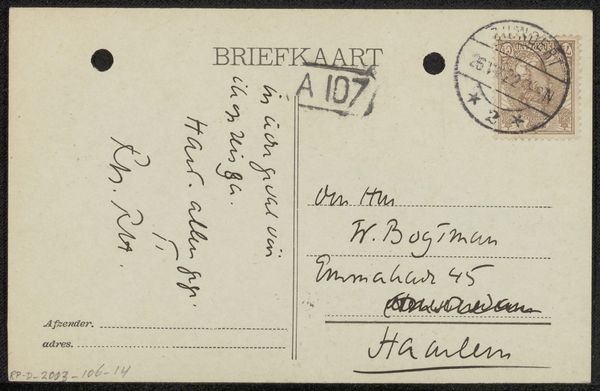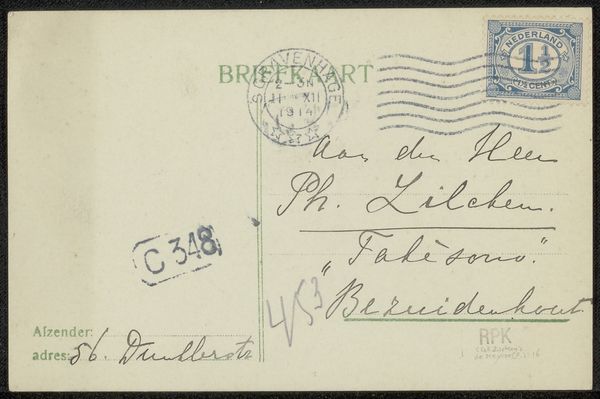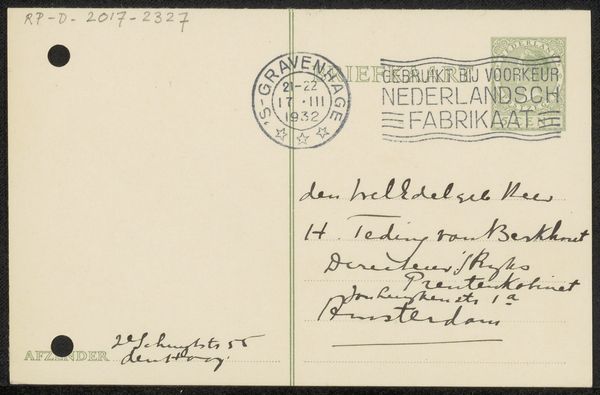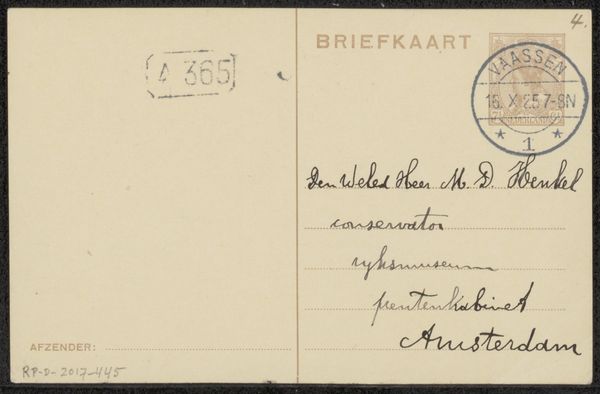
#
comic strip sketch
#
hand drawn type
#
personal sketchbook
#
linework heavy
#
hand-drawn typeface
#
pen-ink sketch
#
pen work
#
sketchbook drawing
#
storyboard and sketchbook work
#
sketchbook art
Copyright: Rijks Museum: Open Domain
Editor: Here we have Johan Huizinga’s "Briefkaart aan Anna Dorothea Dirks," possibly from 1926. It's ink on paper, a humble postcard. I’m struck by the density of information packed onto such a small surface. What draws your eye when you look at this? Curator: The layers of symbols and script speak volumes. We have the postal markings – the date, the originating city. The green stamp showing authority and value. And of course, the handwriting itself; think of the intimate exchange encoded. It almost feels like a palimpsest of communication. Editor: Palimpsest... like layers of history built upon each other? Curator: Precisely. Consider how handwriting – and this is a beautiful hand – it connects us to a specific person, a moment. The style of lettering becomes a symbol in itself, representing not only information, but a sensibility, a period in time. Even the imperfections, the smudges… what do they suggest to you? Editor: Maybe haste? Or carelessness? It’s a fleeting message, yet also preserved. There is also stamped information, with words such as 'UW BELAN' clearly legible; Dutch for 'your interest'. I find the juxtaposition between handwritten and printed word quite intriguing. Curator: Indeed, it creates a dialogue between the personal and the bureaucratic. This little card isn't just an object, it’s a cultural artifact loaded with the iconography of daily life. And as such it whispers secrets of a past world. Editor: It's amazing how such a commonplace item can be such a rich historical source! Thanks for shedding light on this. Curator: My pleasure. Always remember to consider how even the smallest objects can echo larger cultural narratives.
Comments
No comments
Be the first to comment and join the conversation on the ultimate creative platform.

